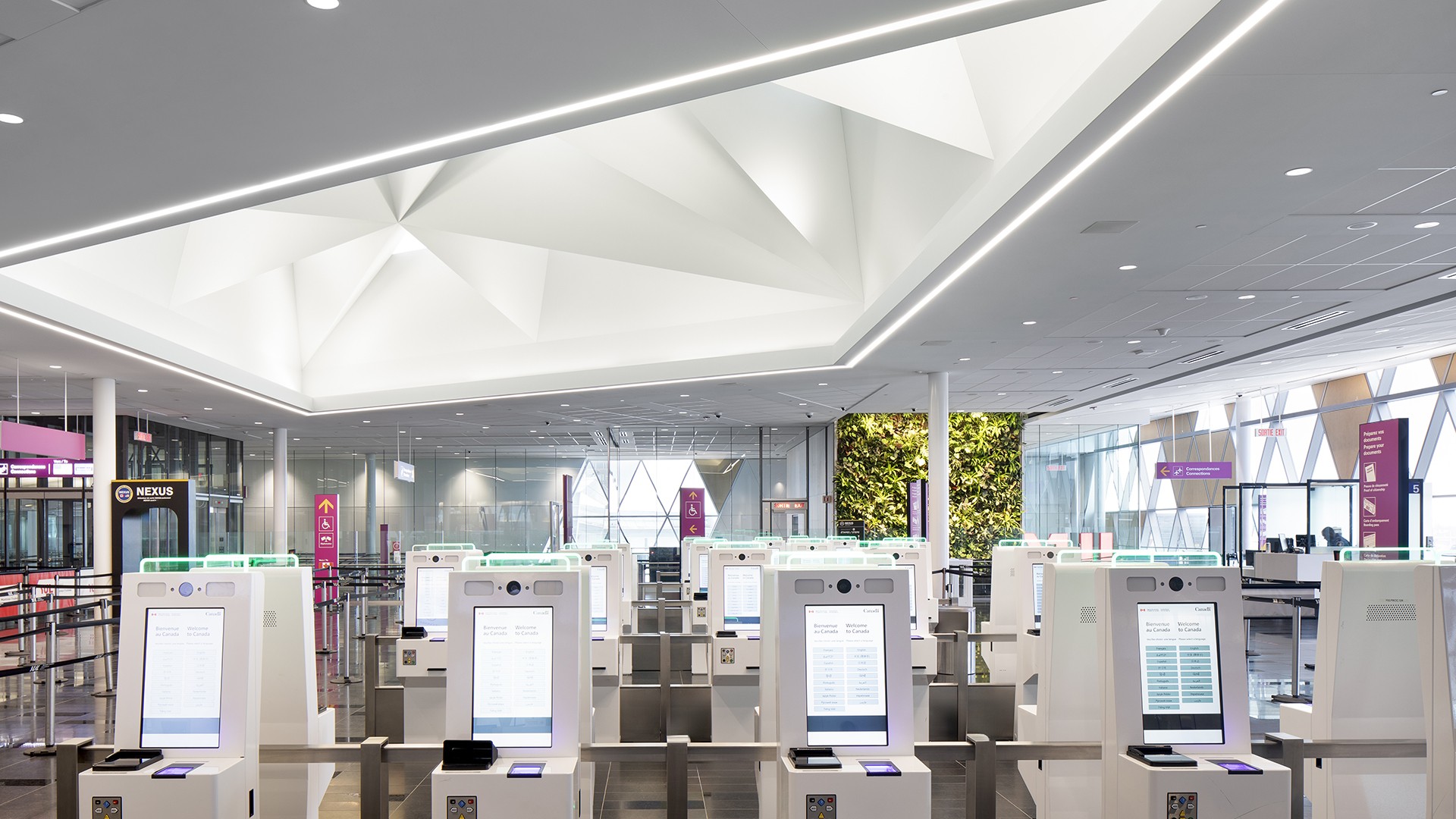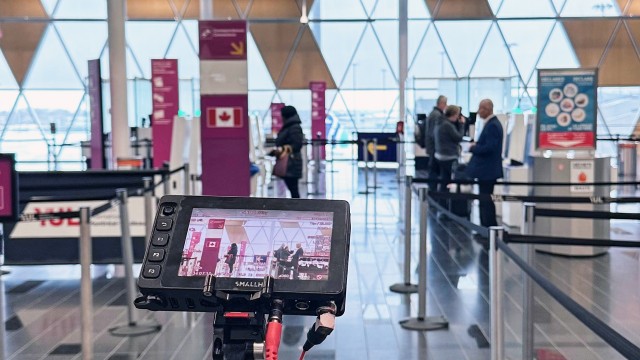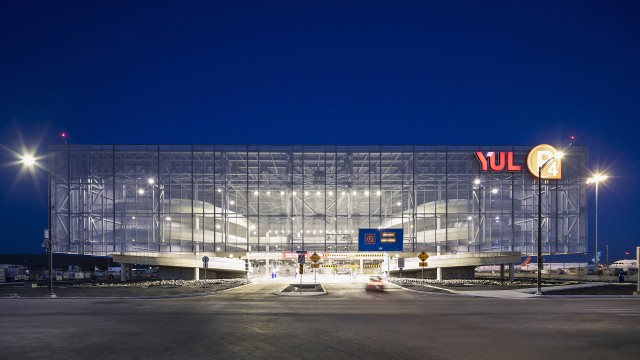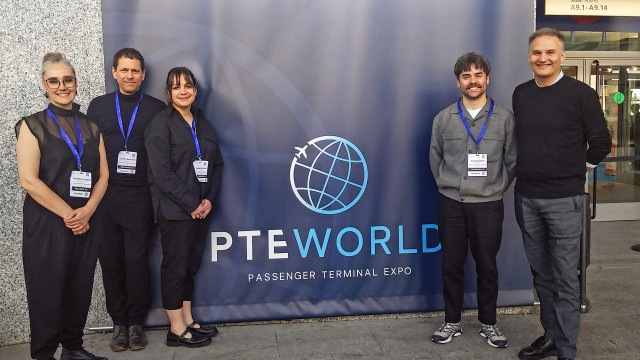A New Centre Enhances the Transit Experience at YUL Montréal–Trudeau International Airport
Jodoin Lamarre Pratte architectes
Montréal, Canada, September 25th, 2025
Press kit v2com no. 2275-07
Designed as part of the growth and vision for the future of the airport, the new installation improves the travel experience for passengers transiting through Montreal. This dedicated transfer centre separates travellers in transit from passengers arriving at their destination, saving time and providing each group with a separate arrival hall to speed up border control.
Located at the intersection of the airport’s three concourses—international, cross-border, and domestic—the space is bathed in natural light thanks to a 23.5 × 13.5 metre skylight above the automated inspection kiosk area. A triangular grid, inspired by the convergence of multiple travellers’ paths, dictates both the composition of the envelope and the geometry of the skylight.
While the first phase of construction was inaugurated in 2019, the centre was completed in 2025, making it fully operational.
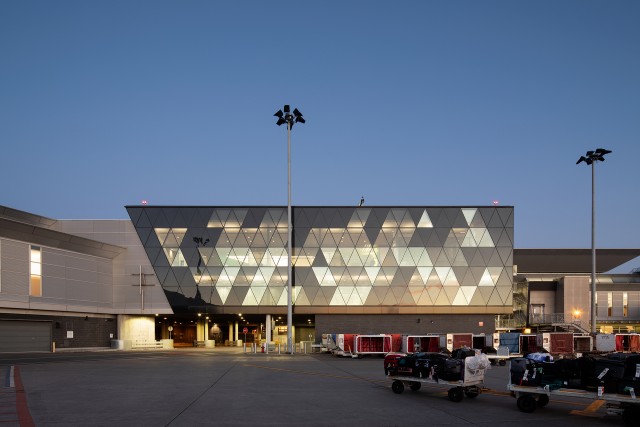
Designing a memorable passage through YUL
For the new connection centre at YUL Montréal-Trudeau International Airport, ADM Aéroports de Montréal wanted passengers in transit to be left with a lasting impression of Montreal.
The connection center is dedicated to transit passengers, who by definition will not be staying in Montreal. It therefore represents a unique opportunity to leave them with a lasting impression of the city, even during their brief stay. The architectural design was guided by the desire to offer travellers a high-quality space, bright and evocative of the culture and northern charm of Montreal, Quebec, and Canada.
The project was designed to integrate harmoniously with the existing building, while distinguishing itself by the special treatment of its facades. Its dimensions make it possible to accommodate a large and growing number of visitors without overshadowing the imposing volume of the arrivals hall, which remains the gateway to the city of Montreal. The building has two floors, connected to both arrivals and departures. All connecting passengers access the centre at the intersection of the airport's three jetties, in an open area bathed in natural light, thanks to a large skylight and a generous curtain wall overlooking the aircraft parking lot. Once through customs, they continue on to their next destination, whether domestic, transborder, or international.
A transfer centre is a place of passage and crossroads leading to a multitude of possible destinations. This function inspired the design team to work with a triangular grid where lines intersect, converge, or diverge. This dynamic grid is a common thread throughout the project, reflected in the composition of the envelope and columns, as well as in the geometry of the skylight overlooking the heart of the project: the area where passengers complete the border verification process at the Primary Inspection Kiosks (PIK).
A reflection of Canada's geographical identity, the façade, a triangular grid of solids and voids, reinterprets the landscape of the Canadian Shield with its dense forests, rocky outcrops, and vast expanses of water. Inside, local and Canadian materials have been used, such as Atlantic Black granite on the floor and birch wood, used as wall cladding. Contributing to thermal comfort and passenger well-being, a green wall is connected to the ventilation system. It maintains a comfortable level of humidity in the air preheated by a solar wall located on the south façade of the building, a renewable energy source.
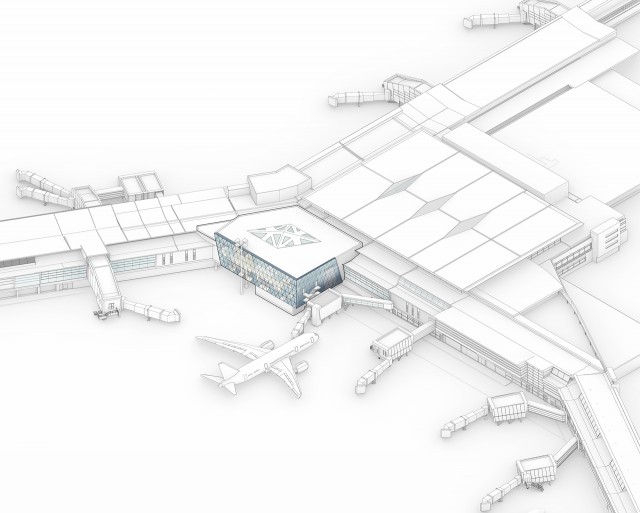
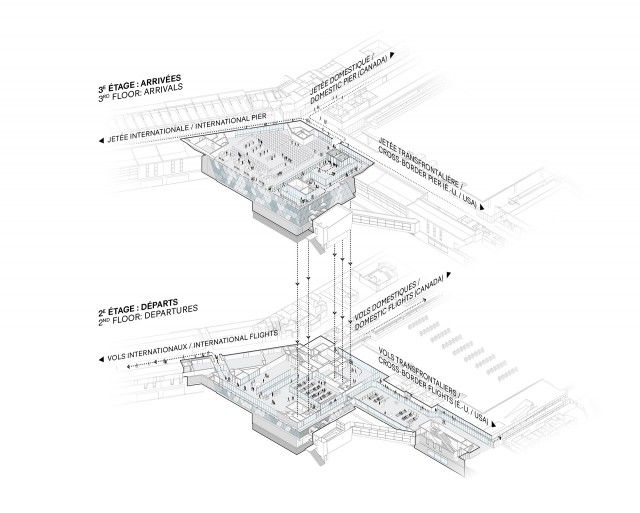
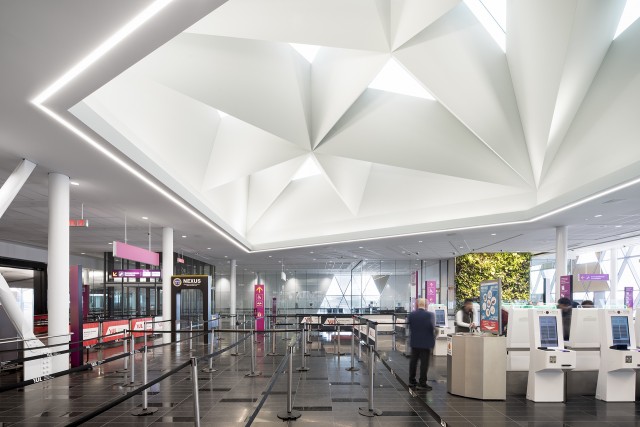
Team of professionals
Client: ADM Aéroports de Montréal
Architecture: Jodoin Lamarre Pratte architectes
Civil engineering: EXP
Structural engineering: NCK
Electromechanical engineering: Tetra Tech
Telecoms: AtkinsRéalis
Construction: Pomerleau
